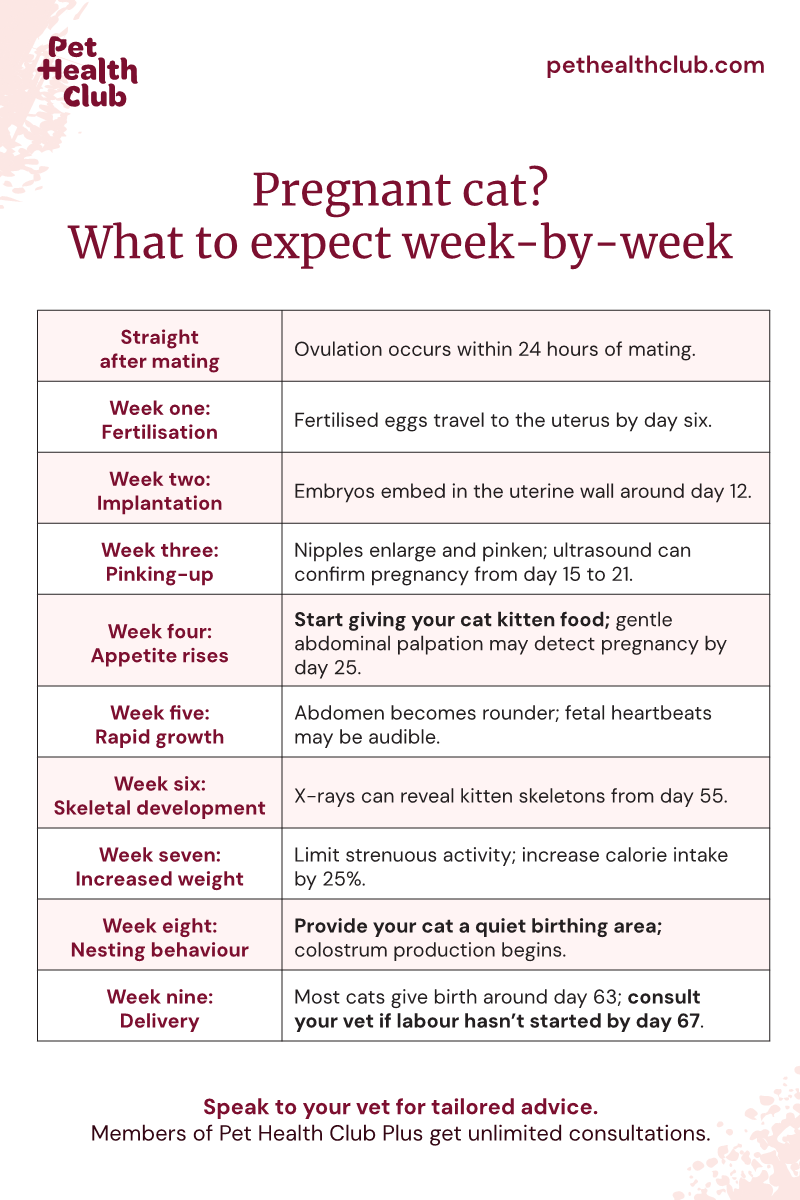When you stroll through the pet food aisle, those colorful bags and cans might catch your eye, but what’s really important is what’s inside. Understanding how to read nutrition labels on cat food can make a world of difference for your feline friend’s health.
You want the best for your cat, and knowing what each label means will empower you to make informed choices. Imagine the peace of mind you’ll have when you know exactly what your cat is eating and how it supports their well-being.
Dive into this guide and unlock the secrets behind those labels, ensuring your beloved pet gets the nutrition they truly deserve.
Importance Of Nutrition Labels
Reading nutrition labels on cat food helps pet owners make informed choices. It ensures cats receive balanced diets with essential nutrients. Understanding these labels supports your cat’s health and well-being.
Understanding what goes into your cat’s food is essential. Nutrition labels provide critical insights into the food’s content. They help you make informed choices for your feline friend. Knowing how to read these labels ensures your cat gets a balanced diet. This helps maintain their health and well-being.
Understanding Key Nutrients
Cats need specific nutrients to thrive. Protein is vital for their muscles. Fat provides energy. Vitamins and minerals support their immune system. Checking these on labels is crucial.
Decoding Ingredient Lists
Ingredients are listed by weight. The first ingredient is the most abundant. Look for real meat as the first ingredient. Avoid fillers like corn or soy.
Checking For Additives And Preservatives
Some additives are harmful to cats. Check labels for artificial colors or flavors. Natural preservatives like vitamin E are safer. Stay cautious about chemical additives.
Evaluating Caloric Content
Calories determine how much energy your cat gets. Too many calories can lead to obesity. Ensure the caloric content matches your cat’s activity level.
Identifying Allergen Information
Some cats have allergies. Common allergens include wheat and dairy. Labels can help identify these ingredients. Choose hypoallergenic options if needed.
Ensuring Compliance With Aafco Standards
Look for the AAFCO statement on labels. This ensures the food meets basic nutritional standards. It indicates the food is balanced and safe. Nutrition labels are your guide to a healthy cat. They provide transparency in your cat’s diet. Reading them carefully ensures your cat’s optimal health.
Key Components On Cat Food Labels
Understanding cat food labels is crucial for your pet’s health. Focus on protein sources, ingredient lists, and guaranteed analysis for balanced nutrition. Check for essential vitamins and minerals to ensure a well-rounded diet.
Reading cat food labels helps you make informed choices. These labels contain essential information about your pet’s diet. Understanding these components ensures your cat receives optimal nutrition. Below are key parts to focus on.
Guaranteed Analysis
This section provides nutrient information in percentages. It includes protein, fat, fiber, and moisture content. It’s crucial to check these values for balanced nutrition. Higher protein content suits active cats. Ensure moisture levels are sufficient for hydration. Compare fat levels to assess calorie intake. This helps manage your cat’s weight effectively.
Ingredient List
Ingredients are listed by weight, from highest to lowest. Look for high-quality protein sources like chicken or fish. Avoid by-products and fillers for better nutrition. Whole grains or vegetables indicate good fiber sources. Understanding ingredient order helps identify main components. Watch out for artificial additives or preservatives. They may affect your cat’s health negatively.
Aafco Statement
The Association of American Feed Control Officials sets nutrition standards. AAFCO statements ensure the food meets nutritional requirements. Look for phrases like “complete and balanced” for all life stages. This verifies the food supports your cat’s health comprehensively. Products with AAFCO approval indicate adherence to quality standards. This assurance helps in selecting safe and nutritious food for your pet.
Decoding Guaranteed Analysis
Understanding cat food labels helps pet owners make informed choices. Focus on protein, fat, and fiber percentages. Check ingredient list for quality and source details.
Understanding cat food labels can be tricky. Yet, it’s vital for your cat’s health. The “Guaranteed Analysis” section holds key information. It tells you about nutrients in the food. This part helps you compare products. Let’s break down this section to make informed choices for your furry friend.
Crude Protein
Protein is crucial for cats. It supports growth and muscle health. The label shows the minimum percentage of crude protein. Look for higher values. Cats need protein as they are carnivores.
Crude Fat
Fat provides energy and aids in vitamin absorption. The label lists the minimum crude fat percentage. Ensure the fat comes from quality sources. Fish and chicken fats are good options.
Crude Fiber
Fiber aids digestion and prevents hairballs. The label shows the maximum crude fiber percentage. Low fiber is better for most cats. Too much can cause digestive issues.
Moisture Content
Moisture is vital for hydration. The label indicates the maximum moisture percentage. Wet food has higher moisture than dry. Ensure your cat gets enough water daily.
Understanding Ingredients
Understanding what goes into your cat’s food is essential for ensuring their health and happiness. When you glance at the nutrition label, it can sometimes feel like deciphering a foreign language. It’s not just about knowing what each ingredient is, but understanding the role it plays in your cat’s diet. By breaking down the components, you can make informed decisions that benefit your feline friend.
Whole Foods Vs. By-products
Whole foods, such as chicken or fish, provide essential nutrients that your cat needs. They are typically the main ingredient in high-quality cat foods. Think of them as the foundation of a healthy diet.
By-products, on the other hand, are the leftover parts after the main product has been processed. While they can offer nutritional value, they often vary in quality. How do you balance these in your cat’s diet? Consider choosing foods where whole foods are the first listed ingredients.
Additives And Preservatives
Ever wondered why some cat foods have a long shelf life? It’s often due to additives and preservatives. These elements help in maintaining freshness and enhancing flavor. However, not all additives are created equal.
Natural preservatives like vitamin E are generally safer compared to artificial ones. Check the label for names you recognize and understand. Are there additives you should avoid? Yes, some may cause allergies or digestive issues in cats.
Reading labels isn’t just a chore; it’s a step toward better health for your cat. Which ingredients are you comfortable with in your cat’s bowl?
Role Of Aafco Standards
Understanding nutrition labels on cat food is crucial for ensuring your feline friend gets the best diet. The Association of American Feed Control Officials (AAFCO) plays a pivotal role in setting standards that help guide pet food manufacturers. These standards ensure that the food meets certain nutritional requirements, making it easier for you to choose the best option for your cat.
Nutritional Adequacy
AAFCO standards help determine whether cat food meets the basic nutritional needs. When a label states that the food is “complete and balanced,” it means the product has passed AAFCO’s nutritional adequacy standards.
Look for labels that specify the food is suitable for a particular life stage, such as kittens or adult cats. This ensures the food provides the right nutrients for your cat’s current phase of life. Wouldn’t you want to ensure your cat receives all essential nutrients for growth and health?
Feeding Trials
Feeding trials are another way AAFCO evaluates the quality of cat food. These trials involve testing the food on cats over a period to observe health outcomes. If the food passes, it means real cats have successfully thrived on it.
Some pet owners prefer brands that conduct feeding trials because they provide additional assurance of the food’s quality. This can be particularly important if your cat has specific dietary needs or sensitivities. Have you considered how feeding trials might impact your choice of cat food?
_441xa.jpg)
Credit: www.natureski.co.nz
Interpreting Caloric Content
Understanding cat food labels involves checking caloric content for balanced nutrition. Locate the calorie statement, often near ingredients. Ensure your cat’s dietary needs match the caloric intake recommended.
Understanding the caloric content of your cat’s food is essential for maintaining their health. Just like humans, cats require a balanced diet to stay fit and active. Accurately reading the nutrition labels can help you make informed choices about the food you provide for your feline friend. Let’s dive into the details of interpreting caloric content on cat food labels.
Calories Per Serving
The first thing you should look for is the number of calories per serving. This information is usually listed on the label and is crucial for understanding how much energy your cat will get from their food. Check if the serving size matches what you typically feed your cat. If you give your cat more than the recommended serving size, they may consume more calories than needed. Over time, this can lead to obesity and related health issues. Always adjust the portion size according to your cat’s needs and activity level.
Portion Control
Portion control is key to managing your cat’s caloric intake. Just like in humans, controlling the portion size can prevent overeating. Most food labels provide guidelines based on your cat’s weight and activity level. Consider using a measuring cup to ensure accuracy. Have you noticed your cat leaving food in the bowl? This might mean you’re overfeeding, and it’s time to reassess the portion size. Remember, your cat’s needs may change with age, activity level, or health conditions. Regularly review their caloric needs and adjust accordingly to keep them healthy and happy.
Identifying Allergens And Sensitivities
Identifying allergens and sensitivities in cat food is essential for your feline’s health. Cats can have allergies or intolerances to certain ingredients. Understanding how to read nutrition labels helps you choose safe food for them. This section will guide you through identifying allergens and sensitivities in cat food labels.
Common Cat Food Allergens
Some ingredients are common allergens for cats. These include beef, chicken, and fish. Grains like corn and wheat may also trigger reactions. Dairy products can cause sensitivities too. Check labels for these ingredients if your cat shows allergy symptoms.
Recognizing Ingredient Sensitivities
Cats may be sensitive to artificial additives. Preservatives and colorings often cause digestive issues. Look for labels that mention natural ingredients. Avoid foods with unknown chemicals or artificial flavors.
Interpreting Ingredient Lists
Ingredients are listed by weight order. The first few ingredients make up most of the food. Check for allergens in the top ingredients. If a known allergen is listed first, consider alternative brands.
Understanding Terms On Labels
Manufacturers use terms like ‘by-product’ and ‘meal.’ These might indicate low-quality ingredients. Avoid foods with vague terms. Look for specifics like ‘chicken meal’ instead of ‘poultry meal.’
Spotting Hidden Allergens
Ingredients can have hidden allergens. For example, gluten is a common issue. Some labels may not clearly state gluten presence. Search for terms like ‘wheat’ or ‘barley’ to identify gluten content.

Credit: petprinces.com
Tips For Choosing The Right Cat Food
Understanding nutrition labels helps choose the best cat food. Look for ingredients like protein sources and avoid fillers. Check for essential nutrients like taurine and omega fatty acids to ensure a balanced diet.
Choosing the right cat food is crucial for your feline friend’s health and happiness. Understanding nutrition labels can seem daunting, but it’s simpler than you think. With a few key tips, you can easily find the best food for your cat’s specific needs.
Age And Lifestyle Considerations
Kittens, adults, and senior cats all have different nutritional needs. A playful kitten requires more protein and fat for energy and growth. Adult cats need a balanced diet to maintain their health and weight, while senior cats might need fewer calories. Consider your cat’s activity level too. An indoor cat may need fewer calories compared to an adventurous outdoor cat. Look for labels that match your cat’s age and lifestyle to ensure they’re getting the right nutrients.
Special Diets For Health Conditions
Just like humans, cats can have special dietary needs. Whether your cat has allergies, diabetes, or kidney issues, specific cat foods are formulated to help. Always consult your vet for recommendations tailored to your cat’s health condition. When reading labels, look for keywords like “grain-free” or “low-protein” depending on your cat’s needs. These specialized foods can make a significant difference in managing health conditions. Remember, investing in the right food can prevent costly vet visits and keep your cat healthier longer. Are you considering any specific dietary changes for your cat? Understanding their unique needs can lead to a happier, healthier life for your furry friend.

Credit: www.purina.com
Frequently Asked Questions
Is 40% Protein Too Much For Cats?
40% protein is generally suitable for most cats. Cats are obligate carnivores, needing high protein diets. Ensure the protein is high-quality and balanced with other nutrients. Consult your veterinarian for specific dietary needs based on your cat’s health, age, and lifestyle.
What Does Min And Max Mean On Cat Food?
“Min” and “max” indicate minimum and maximum nutrient levels in cat food. They ensure balanced nutrition for cats.
How To Know If Cat Food Is Nutritionally Complete?
Check the packaging for an AAFCO statement indicating the food meets nutritional guidelines. Ensure it contains essential nutrients like proteins, fats, vitamins, and minerals. Consult your vet for specific dietary needs. Look for labels like “complete and balanced” to ensure it meets your cat’s nutritional requirements.
How To Tell If Cat Food Is High In Carbs?
Check the ingredients list for grains, corn, or wheat. These indicate high carb content. Look for protein sources first. Analyze the nutritional label for carbohydrate percentage. Aim for less than 10% carbs. Avoid products with fillers like potatoes or rice, which increase carb levels.
Conclusion
Reading nutrition labels on cat food is essential for pet health. Check protein levels for muscle growth. Watch fat content to prevent weight gain. Fiber aids digestion. Vitamins support overall well-being. Avoid harmful additives. Always compare brands for best choice.
Ingredients should be clear and understandable. Consult your vet for specific dietary needs. Regularly update your knowledge about pet nutrition. A little effort ensures your cat’s happiness and health. Make informed decisions for their diet. Your cat’s vitality depends on good nutrition choices.
Keep learning to provide the best care.




